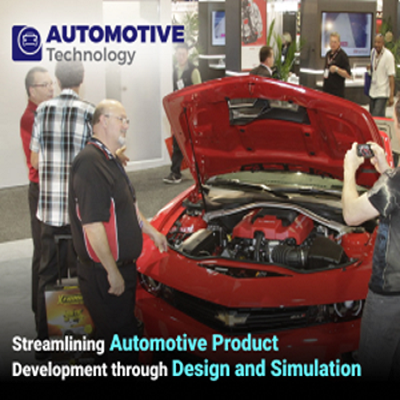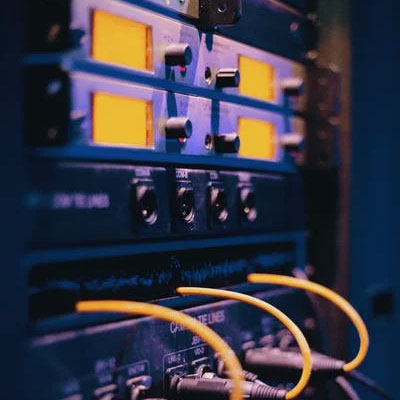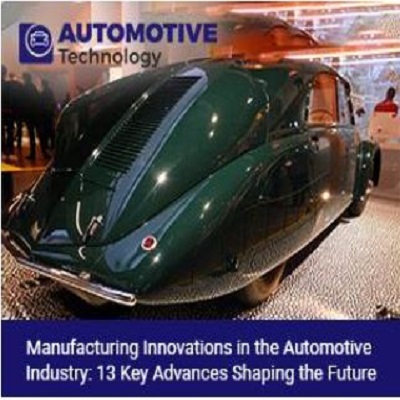Articles
Streamlining Automotive Product Development through Design and Simulation

In the rapidly evolving automotive industry, the race to develop innovative and efficient vehicles has become more competitive than ever. One crucial aspect of this pursuit is the process of automotive design and simulation. Through advanced technologies and sophisticated methodologies, automotive companies are streamlining their product development cycle, aiming for enhanced performance, safety, and sustainability. This article explores the pivotal role of design and simulation in this process, shedding light on the intricate yet vital aspects that drive automotive innovation.
The Importance of Automotive Design and Simulation
Before a vehicle reaches the production line, it undergoes an intricate journey of design, testing, and refinement. The process begins with conceptualizing the vehicle's structure, functionality, and aesthetics. This is where the role of automotive design and simulation gains paramount significance. Designers and engineers utilize advanced software tools and simulations to create virtual prototypes, enabling them to assess the vehicle's performance under various conditions without the need for physical prototypes.
Streamlining Product Development through Virtual Prototyping
Gone are the days when building multiple physical prototypes was the norm for testing and refining automotive designs. With the advent of virtual prototyping, designers and engineers can now save both time and resources while improving the overall design process. By leveraging cutting-edge simulation tools, they can virtually test the vehicle's aerodynamics, structural integrity, and performance, allowing them to identify potential flaws and make necessary modifications in the initial stages of development.
Enhancing Vehicle Safety and Durability
Safety and durability are non-negotiable factors in the automotive industry. Through simulations that replicate real-world scenarios, automotive professionals can assess a vehicle's crashworthiness, structural integrity, and material durability. By subjecting the virtual prototypes to various simulated crash tests and environmental conditions, engineers can fine-tune the vehicle's design to meet stringent safety standards and ensure its durability over an extended lifespan.
Optimizing Performance and Efficiency
Automotive design and simulation play a pivotal role in enhancing a vehicle's performance and fuel efficiency. By conducting simulations that assess the impact of different design modifications on the vehicle's powertrain, aerodynamics, and overall performance, engineers can optimize the vehicle's components for maximum efficiency. This approach not only contributes to reducing fuel consumption but also enhances the vehicle's overall performance, delivering a superior driving experience to consumers.
Integrating Advanced Technologies for Innovation
The integration of advanced technologies such as virtual reality (VR) and augmented reality (AR) has revolutionized the automotive design and simulation process. Through immersive VR experiences, designers and engineers can collaborate in a virtual environment, enabling real-time modifications and evaluations of the vehicle's design. Similarly, AR assists in visualizing complex designs and identifying potential issues during the prototyping phase, thereby expediting the development process and fostering innovation within the automotive industry.
Sustainable Automotive Design for the Future
With mounting environmental concerns, automotive companies are prioritizing the creation of eco-friendly vehicles. By using simulations to evaluate the effects of alternative fuels, lightweight materials, and energy-efficient technologies, engineers can develop vehicles that comply with evolving regulations while minimizing their environmental impact. This emphasis on sustainable design signifies the industry's dedication to a greener transportation future, aiming to curtail carbon emissions.
Challenges and Future Prospects
Amidst the rapidly evolving automotive landscape, the challenges associated with automotive design and simulation persist. One of the primary obstacles is the complexity of accurately simulating real-world scenarios, especially in dynamic environments where numerous variables interact simultaneously. Ensuring the reliability of simulation data remains a crucial concern, as even minor discrepancies can significantly impact the overall design and performance of a vehicle. Moreover, integrating evolving technologies into the design and simulation process necessitates continuous adaptation and a thorough understanding of emerging trends, which can be a demanding task for automotive professionals.
Despite these challenges, the future prospects for automotive design and simulation are promising. With the integration of artificial intelligence (AI) and machine learning (ML) algorithms, automotive companies can enhance their predictive capabilities and streamline the product development process. AI-powered simulations can effectively analyze vast datasets, enabling engineers to identify potential design flaws and optimize vehicle performance with unprecedented precision. Machine learning algorithms can further facilitate the generation of accurate predictive models, allowing for efficient decision-making during the design and development phases.
Moreover, the continued advancements in simulation software are reshaping the automotive industry. These software solutions are becoming more sophisticated, enabling designers and engineers to simulate increasingly complex scenarios with greater accuracy. The integration of cloud computing technology further enhances the scalability and accessibility of simulation tools, enabling automotive companies to conduct comprehensive analyses without significant infrastructure investments. This shift toward cloud-based simulation solutions promotes collaboration and knowledge sharing among geographically dispersed teams, fostering a culture of innovation and efficiency within the industry.
Furthermore, the emphasis on sustainability and environmental consciousness is driving the development of new simulation methodologies. Automotive companies are actively investing in simulations that assess the life cycle of vehicles, from production to disposal, to minimize their environmental footprint. By incorporating these comprehensive sustainability analyses into the design and simulation process, manufacturers can make informed decisions that prioritize eco-friendly materials, energy-efficient technologies, and recyclable components, thus aligning their products with global sustainability goals and regulations.
In essence, while challenges persist, the future of automotive design and simulation is poised for transformation through the integration of AI, advancements in simulation software, and a heightened focus on sustainability. These developments not only promise to streamline the product development process but also underscore the industry's commitment to innovation, reliability, and environmental stewardship. By overcoming challenges and embracing these transformative prospects, the automotive sector is poised to redefine the future of mobility and transportation, setting new benchmarks for safety, efficiency, and sustainability.
In the pursuit of automotive excellence, the challenges of design and simulation are being met with innovative solutions and technological advancements. With a relentless commitment to pushing the boundaries of possibility, the automotive industry is poised to deliver groundbreaking vehicles that redefine safety, efficiency, and sustainability for generations to come.
Conclusion:
In conclusion, automotive design and simulation serve as the cornerstone of modern vehicle development, enabling manufacturers to create safer, more efficient, and environmentally sustainable vehicles. By leveraging advanced technologies, fostering collaboration, and embracing innovation, the automotive industry continues to push the boundaries of what is possible, paving the way for a future that is not only technologically advanced but also environmentally conscious and consumer-driven.




